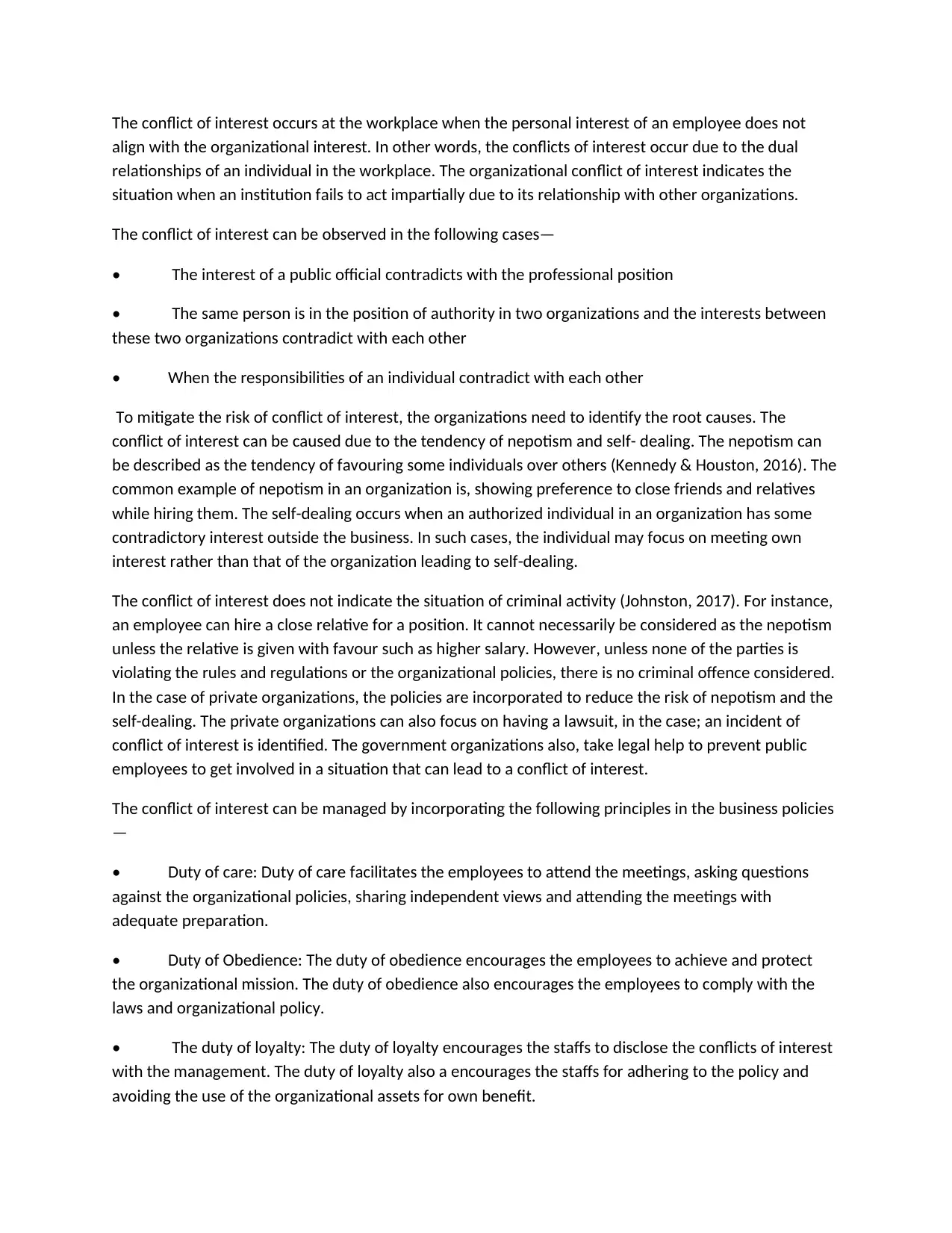Conflict of Interest Report: Implications and Mitigation Strategies
VerifiedAdded on 2019/09/26
|2
|568
|441
Report
AI Summary
This report examines the concept of conflict of interest in the workplace, defining it as a situation where an employee's personal interests clash with the organization's interests, potentially leading to unethical behavior. It explores how conflicts of interest can manifest, including nepotism and self-dealing, and highlights the importance of organizational policies to mitigate these risks. The report differentiates between conflicts of interest and criminal activities, emphasizing that not all such situations involve illegal behavior. It further outlines the duty of care, duty of obedience and duty of loyalty as key principles to manage and prevent conflicts of interest within an organization. The report underscores the significance of these principles to maintain ethical standards and protect organizational interests.
1 out of 2



![[object Object]](/_next/static/media/star-bottom.7253800d.svg)